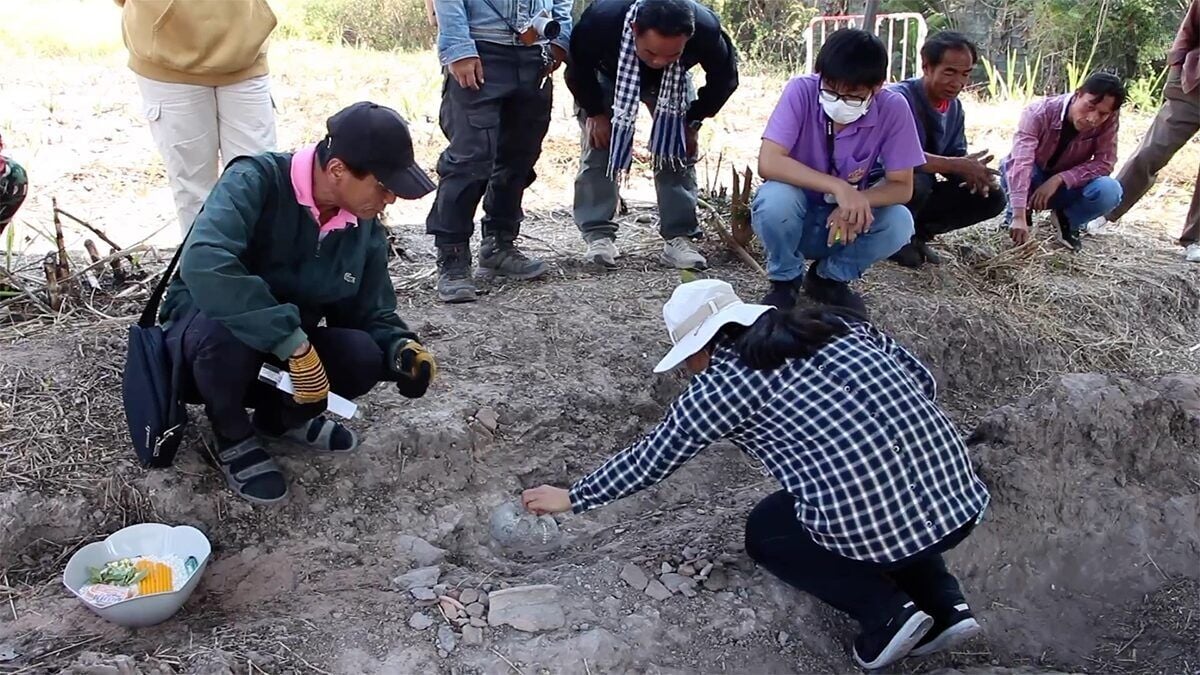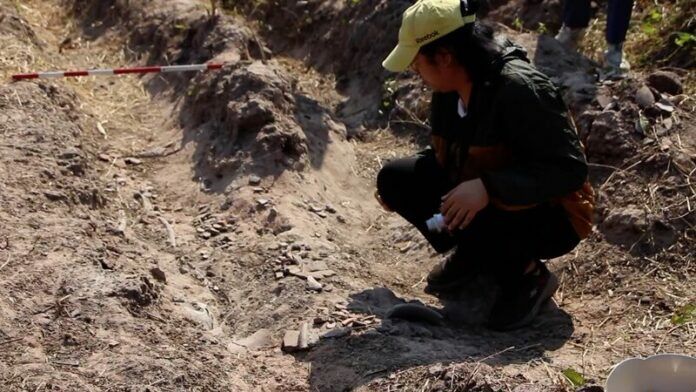Prehistoric skeletons found near Khon Kaen dinosaur museum

While preparing land for cultivation, villagers discovered prehistoric human skeletons estimated to be 1,500 to 2,500 years old, suggesting an ancient settlement location. The Fine Arts Department is examining the remains, found opposite Phu Wiang Dinosaur Museum in the Wiang Kao district of Khon Kaen province.
Thipawan Wong-assapai, a skilled archaeologist from the Fine Arts Office 8 in Khon Kaen, along with department officials, inspected the site where the skeletons were uncovered yesterday, January 7. The discovery was made by locals on January 4, while they were digging to plant cassava.
The skeleton, measuring 140 centimetres, was found lying straight with its head facing west, resembling a burial position. Most parts were eroded due to being in a water channel, except for durable bones like the skull and teeth, which remained intact. The age is estimated to be around 2,500 to 1,500 years, placing it in the prehistoric era.
Additionally, pottery fragments were scattered around the site. Officials collected these pieces for further detailed examination. The area is a high mound near a stream, indicating a potential settlement or habitation site from the prehistoric period, aged between 2,500 and 1,500 years.
This site is not far from Non Nok Tha archaeological site in Nong Na Kham district, Khon Kaen, where numerous ancient human skeletons were previously found. Future excavations or developments as a historical learning site will require consultations with all stakeholders.
Arthit Kot-yoti, the first to discover the skeleton, explained his experience. While ploughing the land for cassava planting, he encountered an object in a water channel, locally referred to as “Sok,” where machinery could not be used. Using a hoe to level the land, he noticed two human teeth.
As he dug further with his hands, removing the soil, he felt compelled to continue until he uncovered a human skull, prompting him to notify the police for further investigation, reported KhaoSod.

Thailand has a rich archaeological history with several recorded instances of prehistoric human skeleton discoveries, particularly in archaeological sites such as:
- Ban Chiang: Known as a UNESCO World Heritage Site, Ban Chiang has yielded numerous human skeletons dating back to the Bronze Age (approximately 1,500 BCE). These discoveries are often associated with evidence of early metallurgy and agricultural practices.
- Spirit Cave: Located in northwestern Thailand, Spirit Cave has revealed skeletons that date back to around 9,000 BCE, among the earliest in the region.
- Non Nok Tha: This site, similar to Ban Chiang, contains skeletons from the Bronze Age and evidence of early societal practices in prehistoric Thailand.
- Khok Phanom Di: Located near the Gulf of Thailand, this site uncovered human skeletons, some adorned with ornaments, dating back about 4,000 to 3,000 years.
While exact numbers of skeletons can vary based on ongoing excavations and interpretations, these sites collectively represent dozens of individual skeletons and serve as vital sources for understanding prehistoric life in Thailand.
Latest Thailand News
Follow The Thaiger on Google News:


























